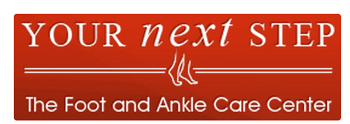
Among some things that can go wrong at birth, foot problems among newborns are quite common. In today’s post, Dr. Eric Ricefield, Dr. Mark Yagodich, and Dr. Aliza V. Eisen of greater Philadelphia’s Your Next Step Foot and Ankle Care Center are sharing information regarding some of the foot conditions they see most often in their office.
Causes of Congenital Foot Problems
A congenital foot condition happens to a child when they are born. These problems can be caused by developmental or positional abnormalities or a genetic predisposition during gestation. However, in most cases, they have no known cause.
Symptoms of Congenital Foot Problems
Symptoms vary by the condition; symptoms may consist of the following.
Clubfoot: With this condition, the shape of bones is different. The Achilles tendon is tight, and tendons shortened, which causes the foot to point down and in. In some cases, the soles of the feet face each other.
Metatarsus adductus: This disorder is detected when a baby’s forefoot and toes point inward, and it is challenging to straighten them. The bottom of the baby’s foot typically resembles a bean.
Polydactyly: This condition typically consists of a small lump of tissue that doesn’t have a bone. It’s like a toe that is partially formed but has no joints.
Vertical talus: With this disorder, the talus bone forms in the wrong position. It causes other bones in the foot to line up incorrectly, the front of the foot to point upward, and the bottom of the foot to toughen, with no arch and curve outward.
Tarsal coalition: This occurs when there is an irregular connection of two or more bones in the foot, causing a severe, rigid flatfoot.
Cleft foot: When your feet are missing toes, they have a V-shaped cleft or possess other structural differences.
Macrodactyly: This condition occurs when the toes are unusually large due to the overgrowth of the underlying soft tissue or bone.
Treatment and Prevention of Congenital Foot Conditions
While there is nothing patients can do to prevent congenital foot conditions, raising awareness and getting neonatal screenings are crucial. Early detection by taking your child to a podiatrist leads to the best possible result.
If you have any questions, please feel free to contact the offices of greater Philadelphia’s Your Next Step Foot and Ankle Care Center for diagnosis and treatment. Click here to locate the office nearest you and schedule an appointment today.
